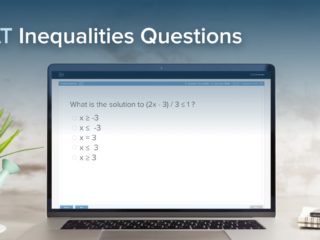Last Updated on May 5, 2023
GMAT OFFICIAL GUIDE PS
Solution:
We start by expressing the interval on the number line as an inequality:
-5 ≤ x ≤ 3
Looking at answer choices A and B, we see that those two equations will not produce the inequality shown above. Thus, we consider answer choices C, D, and E.
When we solve an absolute-value equation with one absolute-value expression, we consider two cases: one with the positive version of the expression inside the absolute value bars and one with the negative (or opposite) version of the expression inside the absolute value bars. Let’s use this fact to evaluate answer choice C:
Answer choice C: |x – 2| ≤ 3
Case 1: Expression Positive:
x – 2 ≤ 3
x ≤ 5
Case 2: Expression Negative:
-(x – 2) ≤ 3
-x + 2 ≤ 3
-x ≤ 1
x ≥ -1
The solution is x ≤ 5 or x ≥ -1, which does not describe the interval represented on the number line.
Answer choice D: |x – 1| ≤ 4
Case 1: Expression Positive:
x – 1 ≤ 4
x ≤ 5
Case 2: Expression Negative:
-(x – 1) ≤ 4
-x + 1 ≤ 4
-x ≤ 3
x ≥ -3
The solution is -3 ≤ x ≤ 5. This does not fit the interval represented on the number line.
Answer Choice E: |x +1| ≤ 4
Case 1: Expression Positive:
x + 1 ≤ 4
x ≤ 3
Case 2: Expression Negative:
-(x + 1) ≤ 4
-x – 1 ≤ 4
-x ≤ 5
x ≥ -5
This DOES describe the interval represented on the number line.
Answer: E



